Indian Cookware, a Guide to the Best Cookware for Indian Cooking
During the time I’ve spent in communities with like-minded fellow Indian food enthusiasts, I heard one question repeated: What should I use to cook Indian food? Most people aren’t very knowledgeable about Indian cookware, let alone the best cookware for Indian curries.
There’s not enough information on the internet about all the items you’ll find in an Indian kitchen.
Unfortunately, this results in a lot of lacklustre meals. How can you make great Indian flatbreads if you don’t know that a great tawa is key? And have you ever wondered about the secret of making your Indian curries taste authentic — Hint: it’s in the cookware.
Understanding which Indian cookware to use for what job is SO important to levelling up your Indian cooking. I can’t state it enough! If you cook Indian food regularly, it’s a no-brainer investment.
That’s why I’ve written this guide to Indian cookware, covering the essentials and specialist tools for BOTH North and South Indian cooking. I’ve included not just pots and pans, but utensils, storage, and kitchenware like mixer grinders, too.
🥘 Indian Cookware: Indian Cooking Pots
Let’s start by exploring the world of Indian pots and pans! Below is a list of all the Indian cookware you’ll need to make Indian food at home, complete with pictures, descriptions of their usage, and links to buy.

Tawa
What is a tawa? It’s a concave (sometimes flat) Indian pan without any sides. It’s a must-have for cooking Indian bread like chapati/roti, fenugreek paratha, and even easy at-home coriander naan.
Larger tawa pans are also perfect for street food dishes like tawa pulao and tawa pizza.
A tawa can be made from aluminium, iron, carbon steel, or non-stick. I recommend aluminium as it’s the most versatile choice.
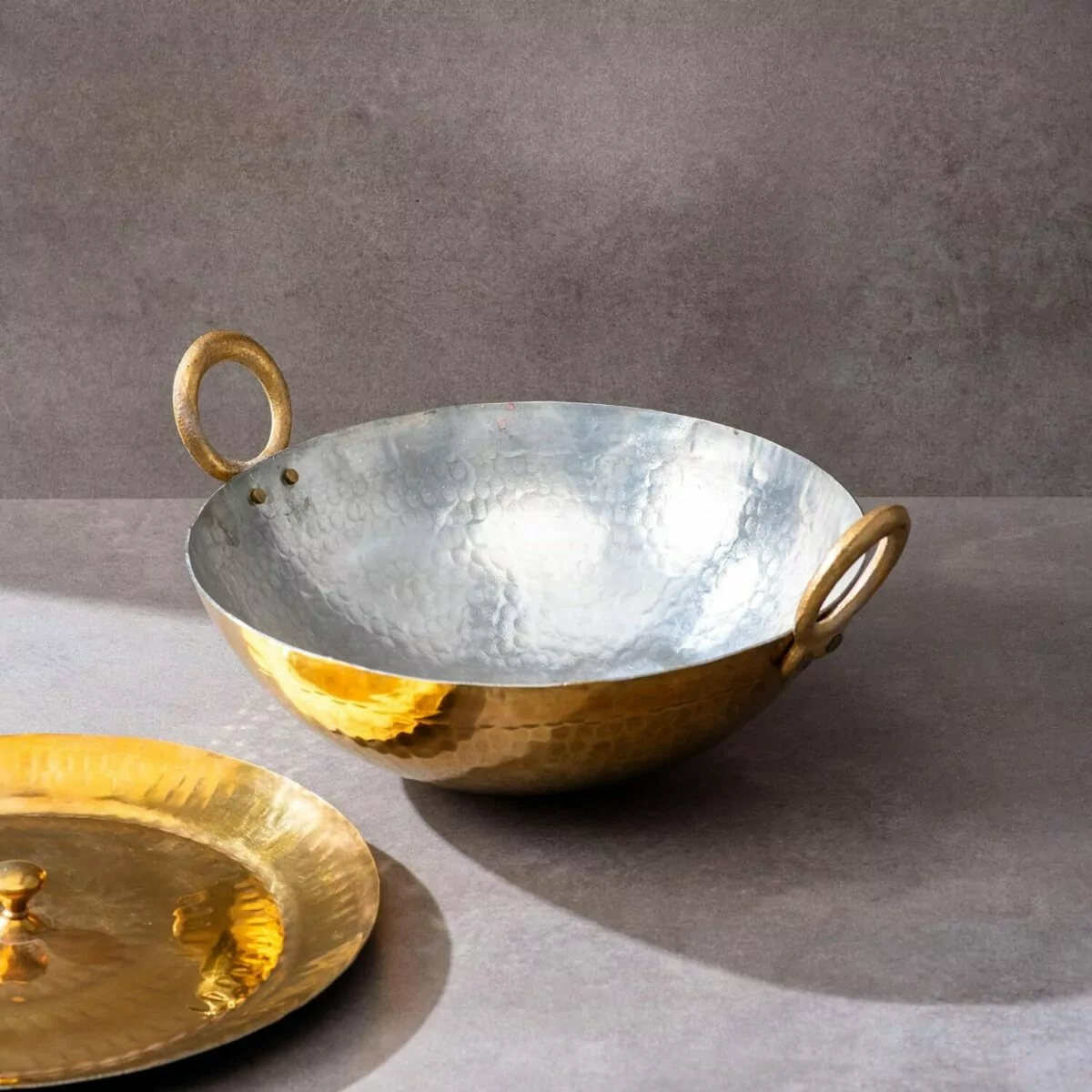
Kadai (karahi)
A large, round-bottomed pan used for cooking curries, a kadai is the most-used pan in Indian households. With a deep bottom and sloping sides, a kadai is ideal for stir-frying or deep-frying dishes like methi malai paneer or vangyache bharit.
The style of kadai varies considerably. Some have no handles; others have upward-facing handles or side handles. Traditionally, aluminium, iron, steel, or mixed metals are most frequent, although brass, non-stick, and cast iron are suitable too. Use one that fits your preferences.
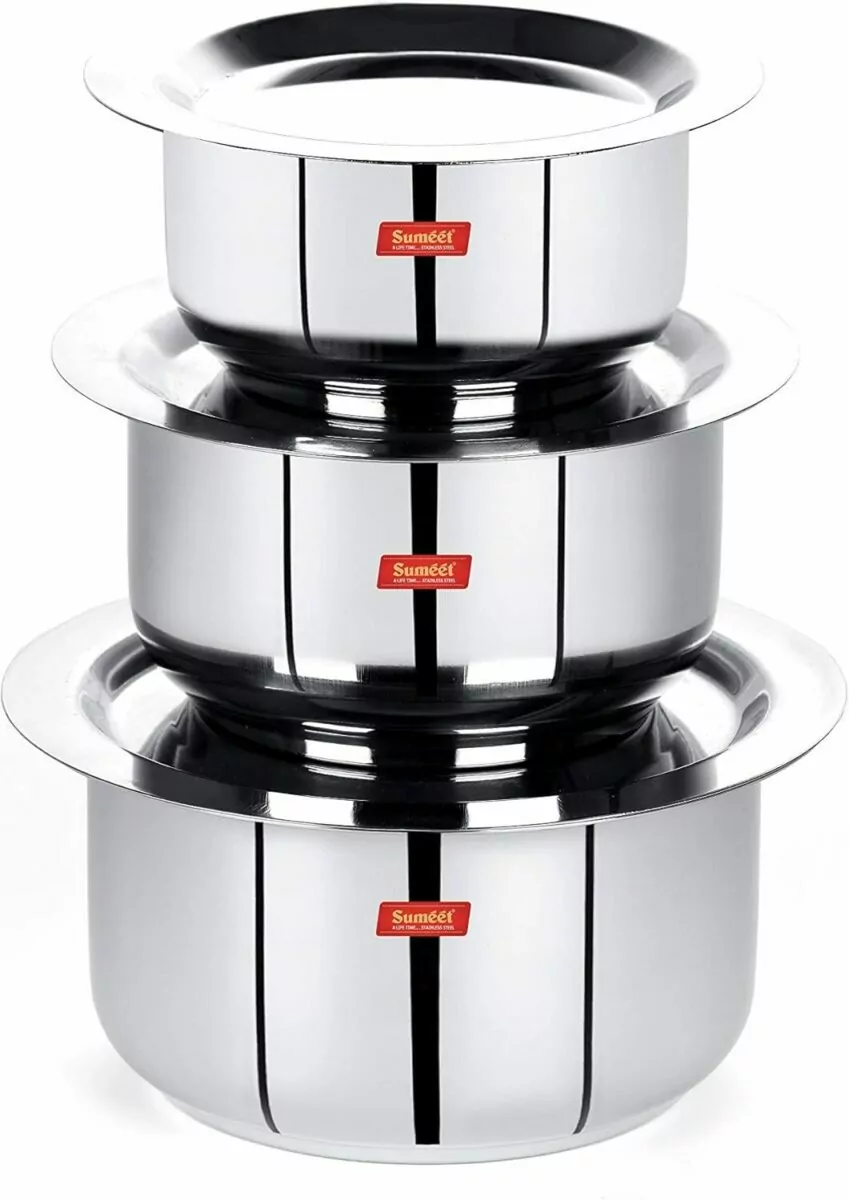
Patila (Patela)
Cooking curries, boiling vegetables, steaming rice, or making chai — a patila can do it all. Small metal saucepans with a lipped rim and matching flat lids (which can double as plates), patila often come in sets of three, nesting inside each other for practical storage.
Unlike a kadai, the bottoms of patila are always flat. They can be made from aluminium, German steel, or copper, and can also make attractive serving vessels for food presentation.
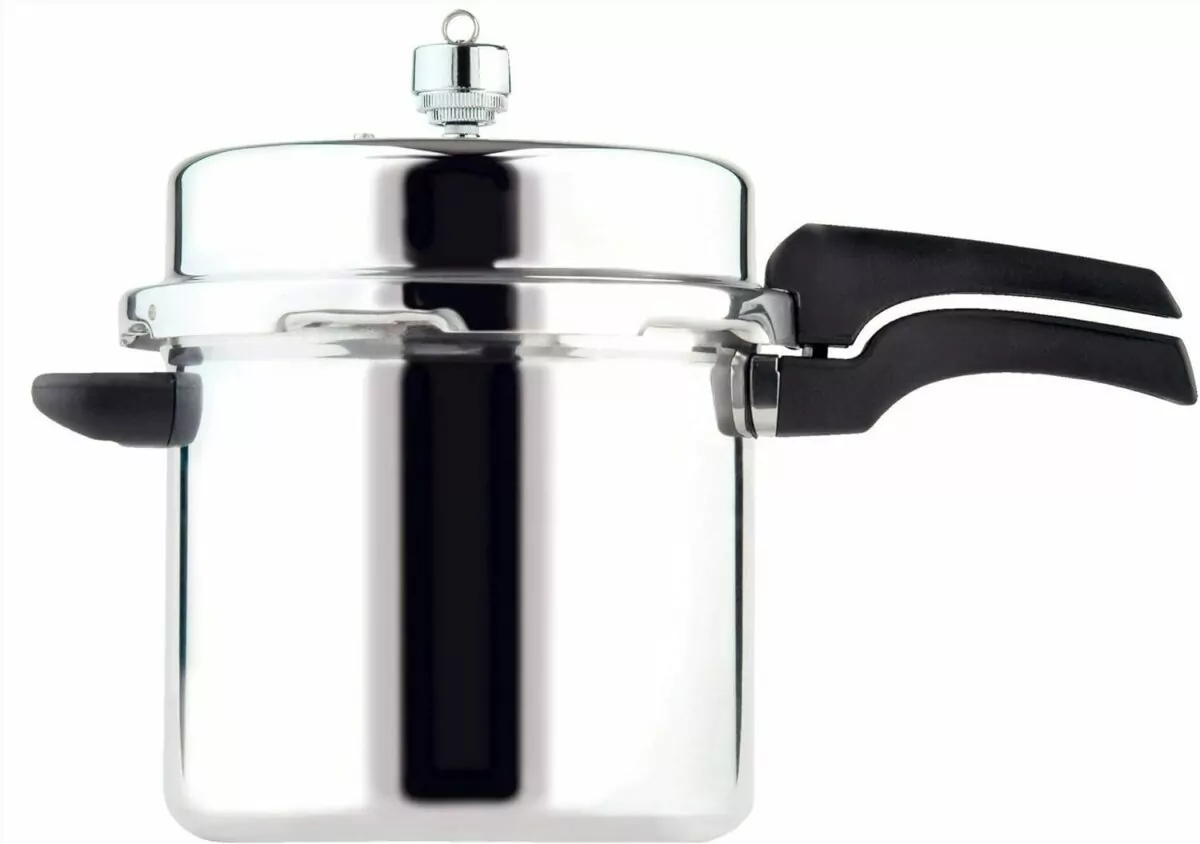
Pressure Cooker
Manual pressure cookers are a vital component of an Indian kitchen. Why are they so popular? Well, lentils, beans, and pulses are a significant portion of the Indian diet and typically take hours to cook. With a pressure cooker, you can significantly reduce the cooking time of dishes like dal tadka and dal bukhara, saving fuel and money.
You can also use a pressure cooker to make rice, steam dishes like kothimbir vadi or dhokla, or even use its sides like a tandoor for tandoori roti.
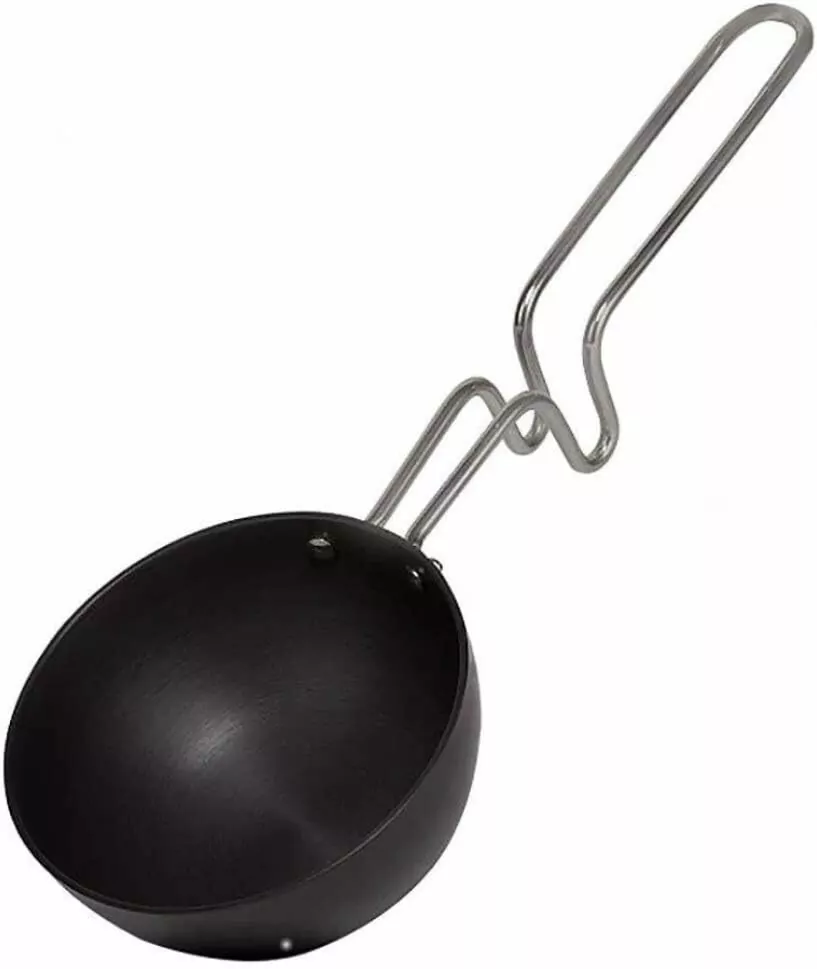
Tadka pan
Tempering is a traditional cooking technique used across the subcontinent. It’s the backbone of many Indian dishes, from vegetable sambar to shevgyachya shenganchi amti. To make a tempering (spices bloomed in oil), you need a tadka pan — a small steel or aluminium rounded pan with a long handle (usually dented so it can stay upright). Despite its size, a tadka pan is a handy piece of Indian cookware for the kitchen.
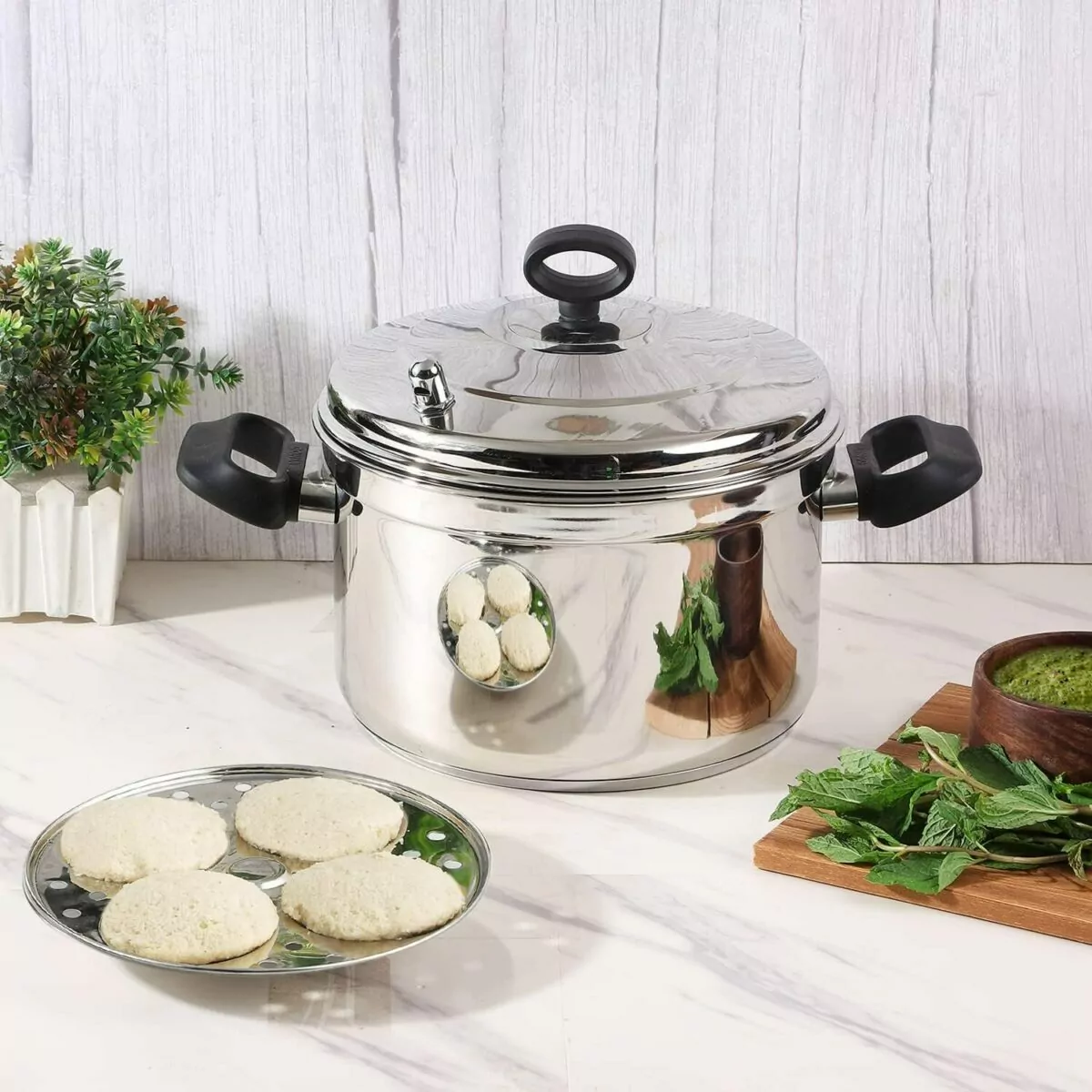
Idli Steamer
If you enjoy cooking South Indian food, an idli steamer is a must-have. As the name suggests, this steamer is primarily used for cooking classic spongy idli and rava idli, but it’s surprisingly versatile.
A large metal pot, an idli steamer usually comes complete with detachable plates with idli moulds and steamer inserts. These inserts work for momos, vegetable gyoza, ukadiche modak, and more.
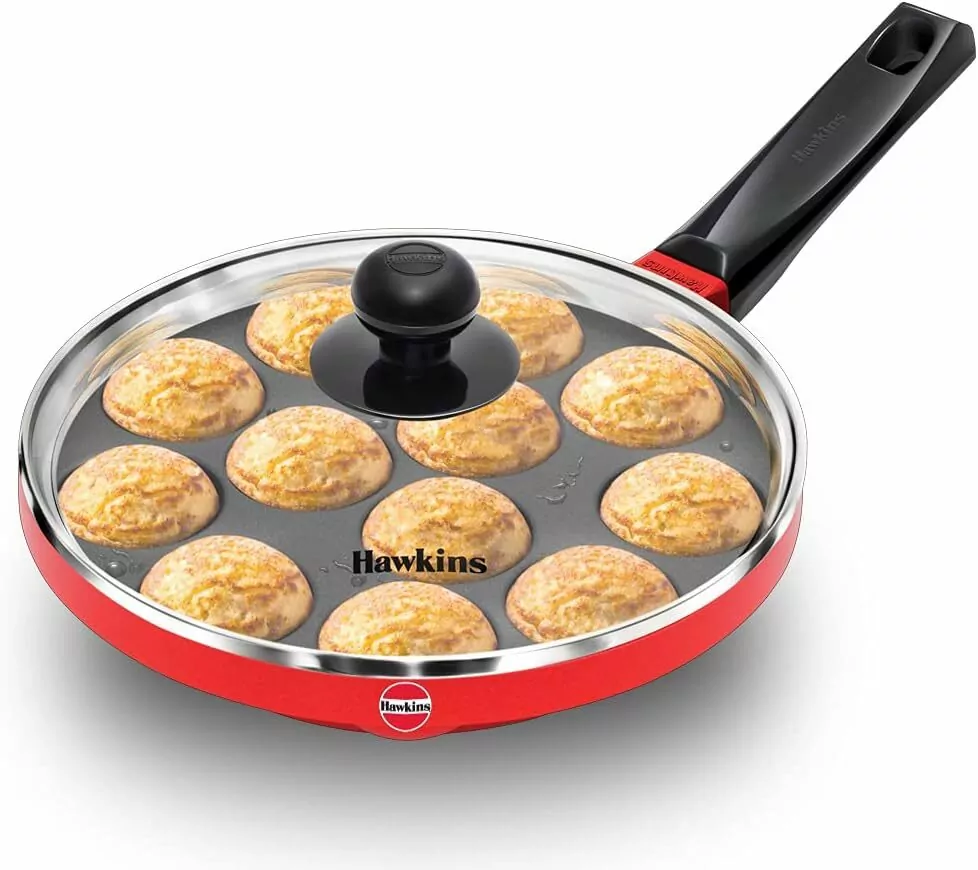
Paniyarakkal (Appe Pan)
Another South Indian essential, this special pan is used for making a breakfast dish known as appe, paniyaram, or paddu. Made from cast iron or non-stick materials, the rounded indents in the pan mean it can even be used as a healthier alternative to deep-frying, making oil-free variants of takeaway-style onion bhaji, veg manchurian, malai kofta, and even non-Indian items like wild garlic falafel.
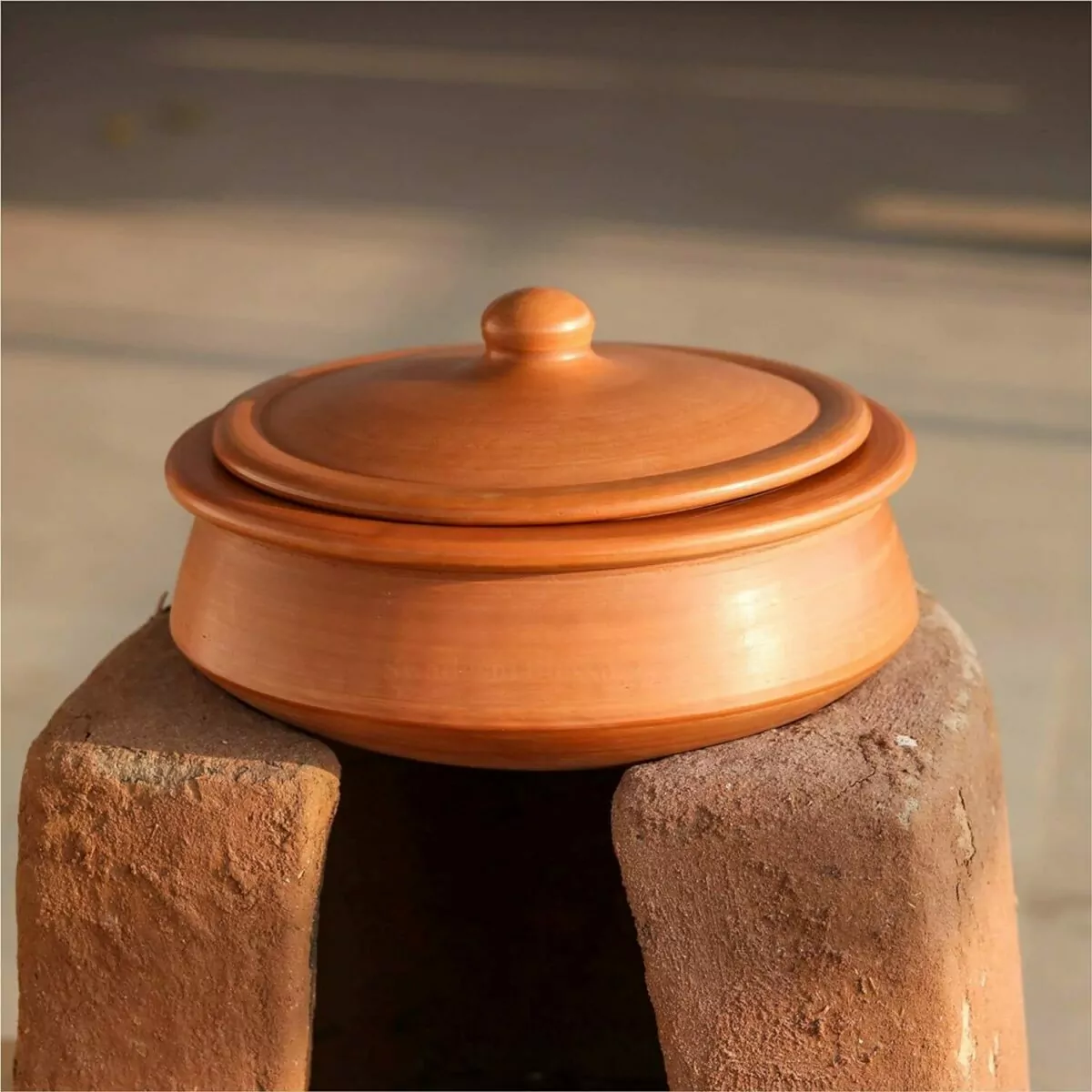
Mitti ki Handi (Clay Pot)
One of the most ancient forms of Indian cookware, clay pots look beautiful and impart a unique flavour to Indian dishes, especially ones like biryani, Punjabi dum aloo, or veg handi. Used predominantly in rural India, clay pots need seasoning before use and require constant upkeep to prevent the delicate clay from breaking.
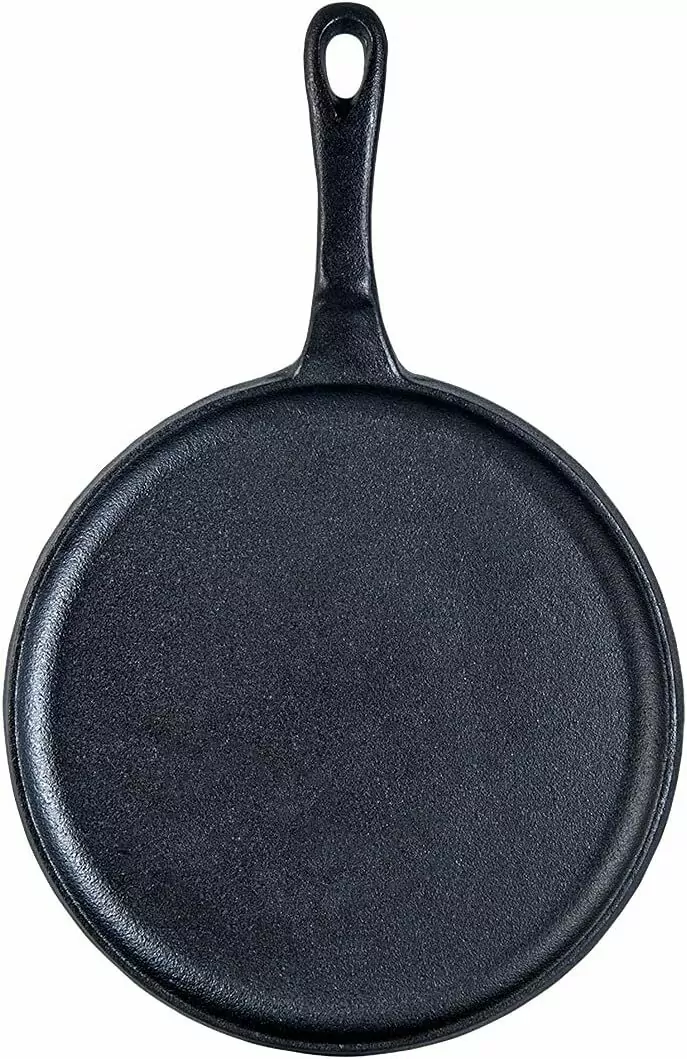
Dosa Tawa
Love having gluten free dosa for breakfast? You’ll need a suitable dosa tawa — it’s key to that golden brown colour and enviable crispy texture.
You should always use a separate tawa to cook dosa or uttapam — Don’t use the same pan for bread or curries. A dosa tawa should be made from thick cast iron for the best results, and always flat-bottomed (as opposed to a chapati/roti tawa, which is often concave). Because it’s made from cast iron, it must be seasoned before use, although you can buy some tawa pre-seasoned.
🍴Indian Cookware: Traditional Indian Utensils
It’s not all about the pots and pans! Utensils play an equally important role, especially as you can’t get proper use out of your pots without some of the matching utensils.
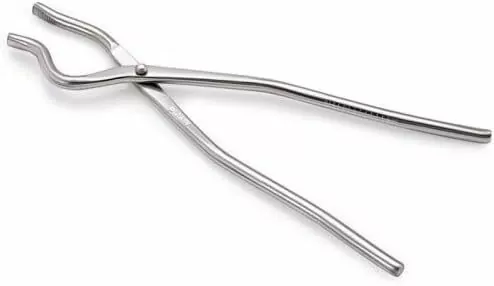
sanshi / Pakkad (Tongs)
Because many Indian pots and pans don’t have handles — patila and kadai, for instance — tongs are essential for picking up and moving around Indian cookware. They have a permanent place in my utensil drawer, and I find myself reaching for them daily. Using tongs (as opposed to a kitchen mitt) has saved me countless burns, spillages, and accidents.
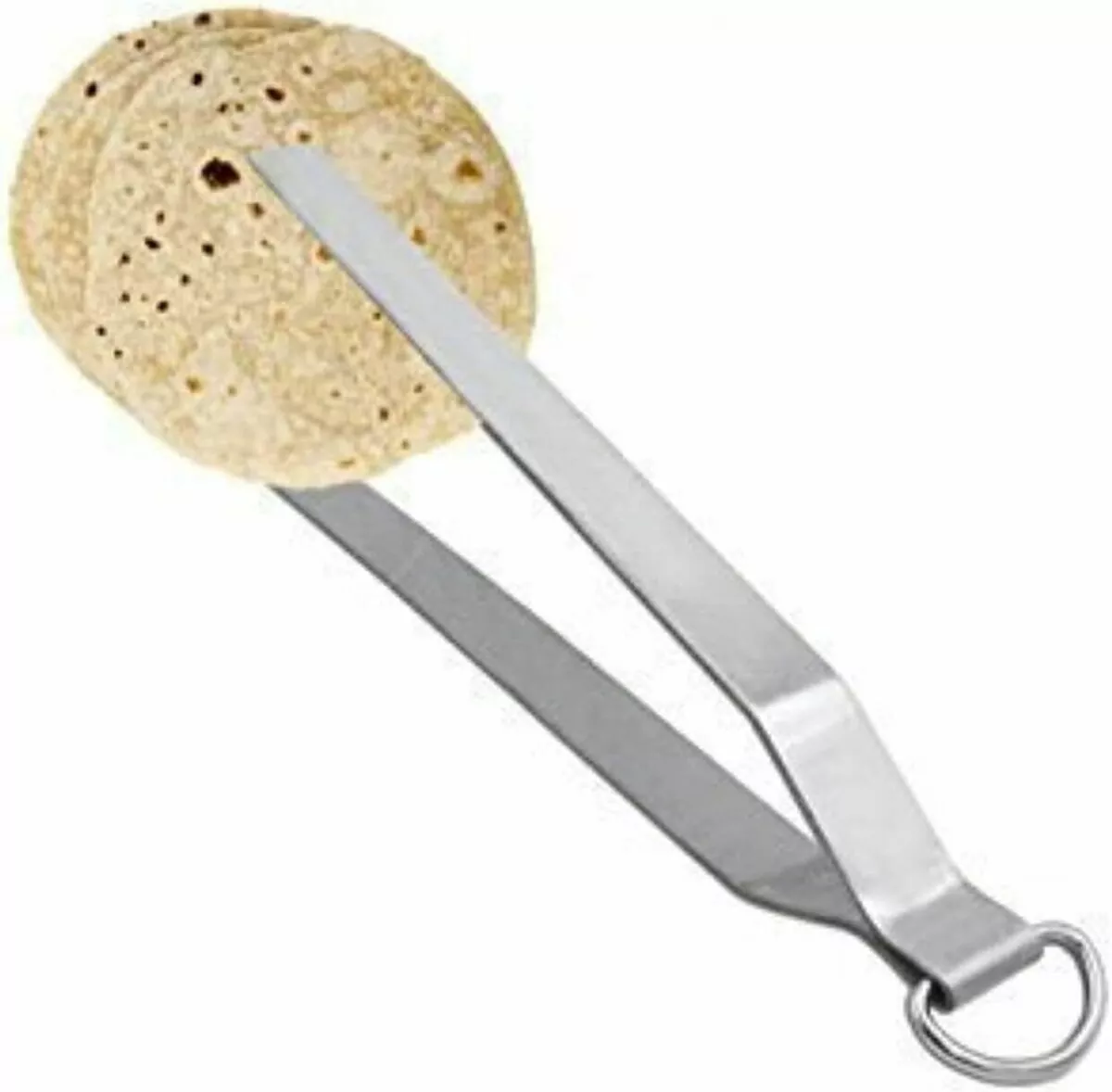
Chimta (Chapati tongs)
These lightweight tongs have one simple (but vital) use: turning chapatis. Instead of risking burning your hands on the hot tawa or gas flame, you can keep your fingers at a safe distance, instead using these to quickly flip the breads.
Chimta can also be used for roasting papad (poppadom). Instead of deep-frying, many Indian households roast papad directly over a flame until bubbly and slightly charred — the ideal use for these tongs!
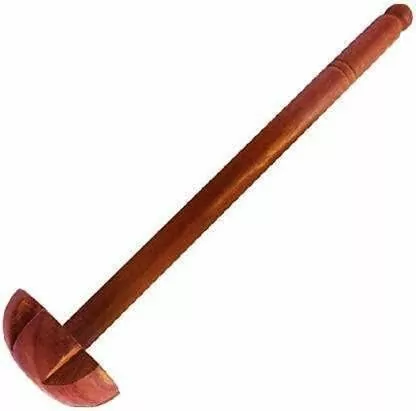
Ghotni (whisk)
My secret to super creamy lentils: a ghotni. This traditional wooden whisk also doubles up as a masher. It has a flower-shaped head and a long stick that is moved backwards and forward between your palms to break down the lentils.
Ghotni is also used for whisking lassi, chaas (buttermilk), and breaking down saag.
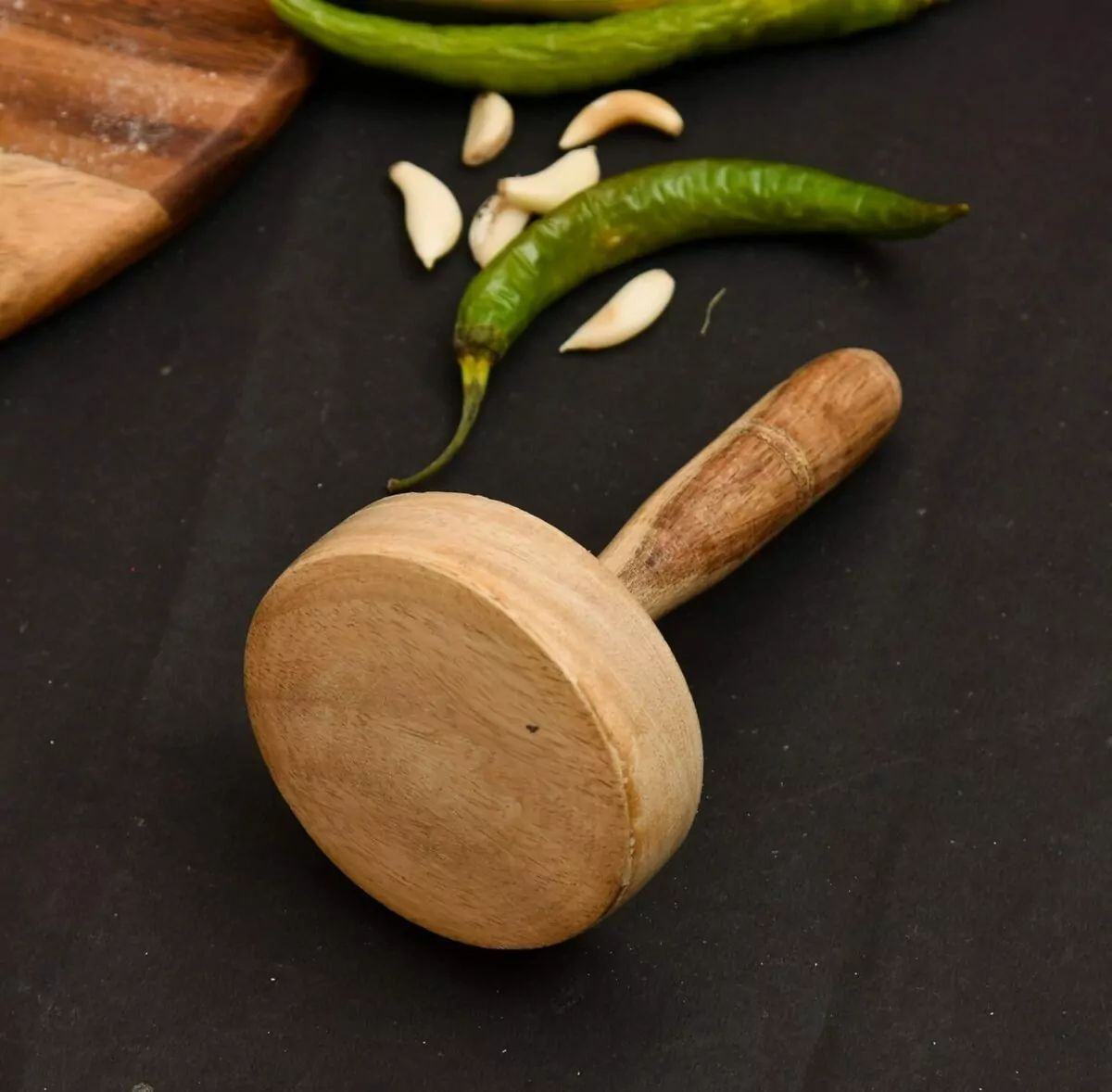
Chapati datta (Bread Press)
If you don’t have a gas hob, you might struggle to puff your chapatis. If that’s the case, I have a solution: a bread press. When your chapatis change colour and begin to get small spots, press the sides of your chapati with the wooden press. Work your way around, prompting the air inside to inflate the chapati until you get a full puff. It’s much easier than the other solution, a bunched-up towel.
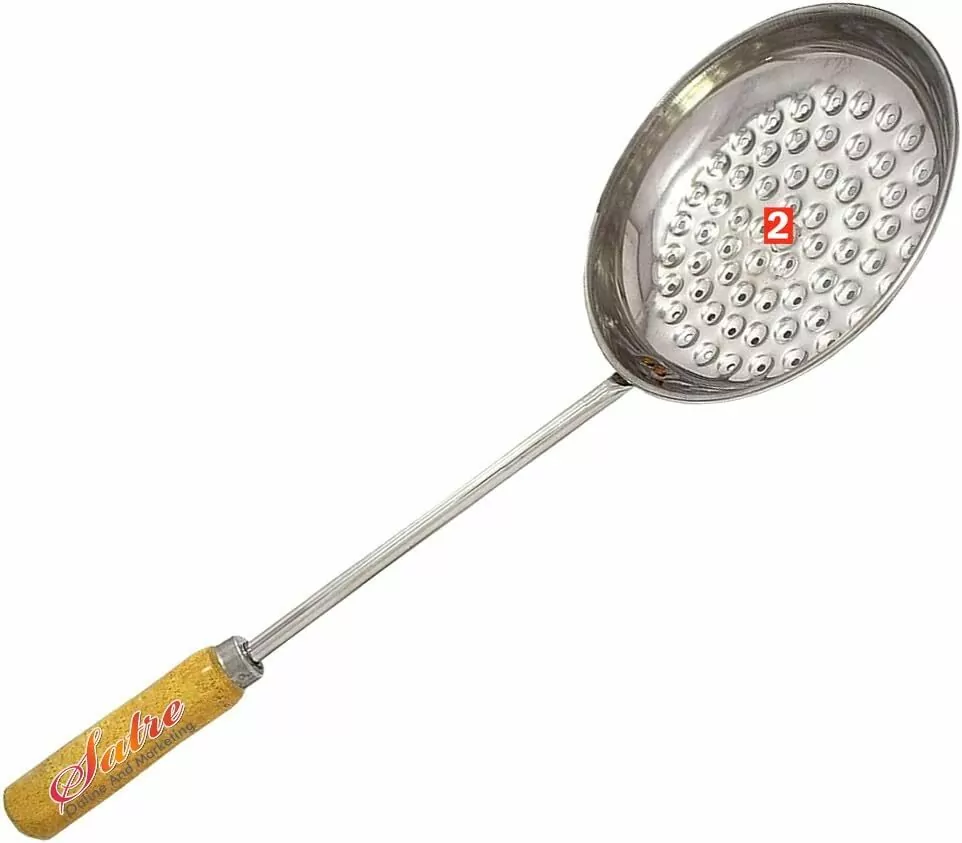
Boondi jara/zara
A large metal spoon with small holes, this utensil is used for making a crunchy snack called boondi, made from gram flour. Boondi is used for dishes like boondi raita, boondi ladoo, and motichoor ladoo. The jara is available in different sizes to account for different-sized boondi.
🎛️ Indian Cooking Tools
Everything that doesn’t fit neatly into the other categories can be found here. Don’t think that means these items are any less important — on the contrary! While I’ve included some specialist items for specific dishes, many cooking tools are used daily in Indian kitchens.
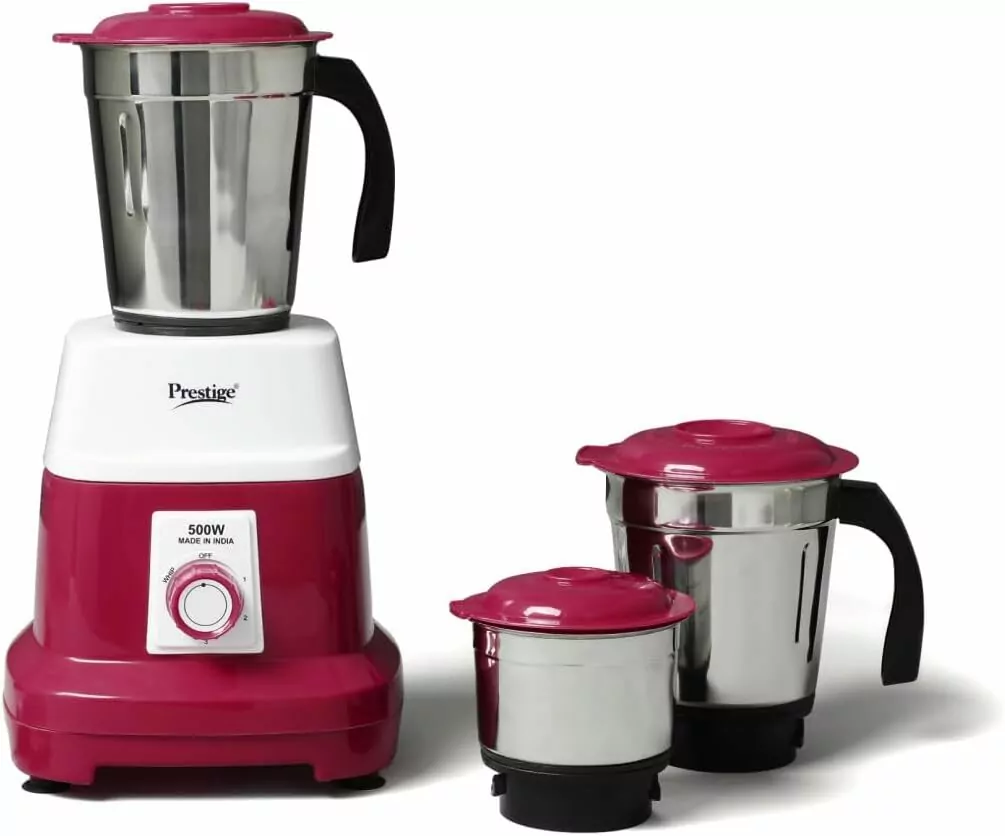
Mixie (Mixer Grinder)
In the days of old, all pastes, batters, and spices were ground by hand. While some areas of rural India still follow this pattern, 99% of Indian households have designated the task to a mixer grinder. Much easier!
You can use a mixer grinder to make masala pastes for curries, ginger garlic paste, green chutney, dosa batter, freshly ground spices, and much more. I recommend an Indian brand, as the blades and design will be suited to Indian food.
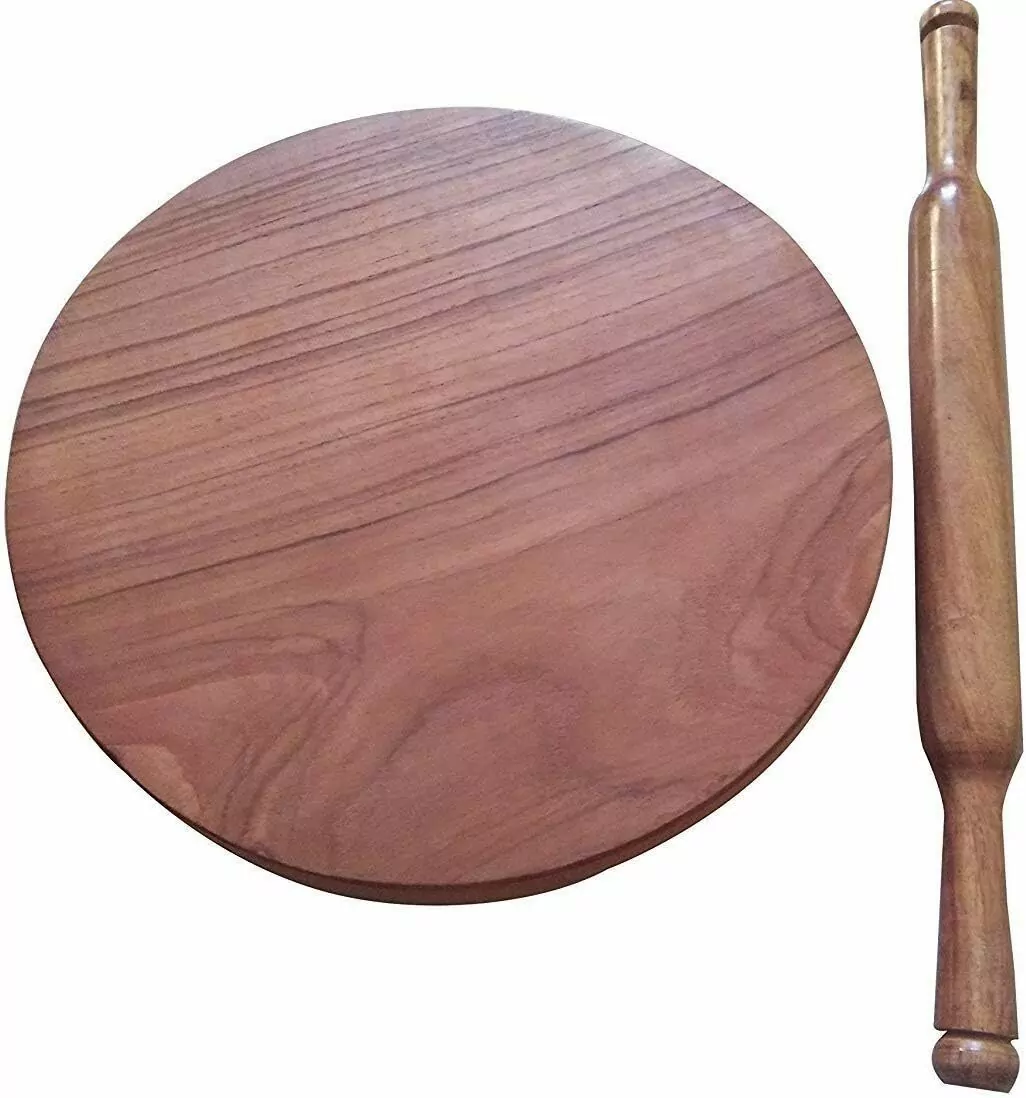
Chakla Belan (Rolling board & Pin)
Designed specifically for making Indian bread, a chakla belan is a little different from rolling boards and pins in the West — the tapered pin is ideal for rolling round, even chapati dough, while the board is just the right size, and slightly elevated. You’ll find regional differences; Gujarati rolling pins tend to be much thinner compared to others, for instance.
Wood is the most popular material for chakla belan, although marble and stone are more expensive options. You can also use a chekla belan for rolling out pastry for vegetable samosa!
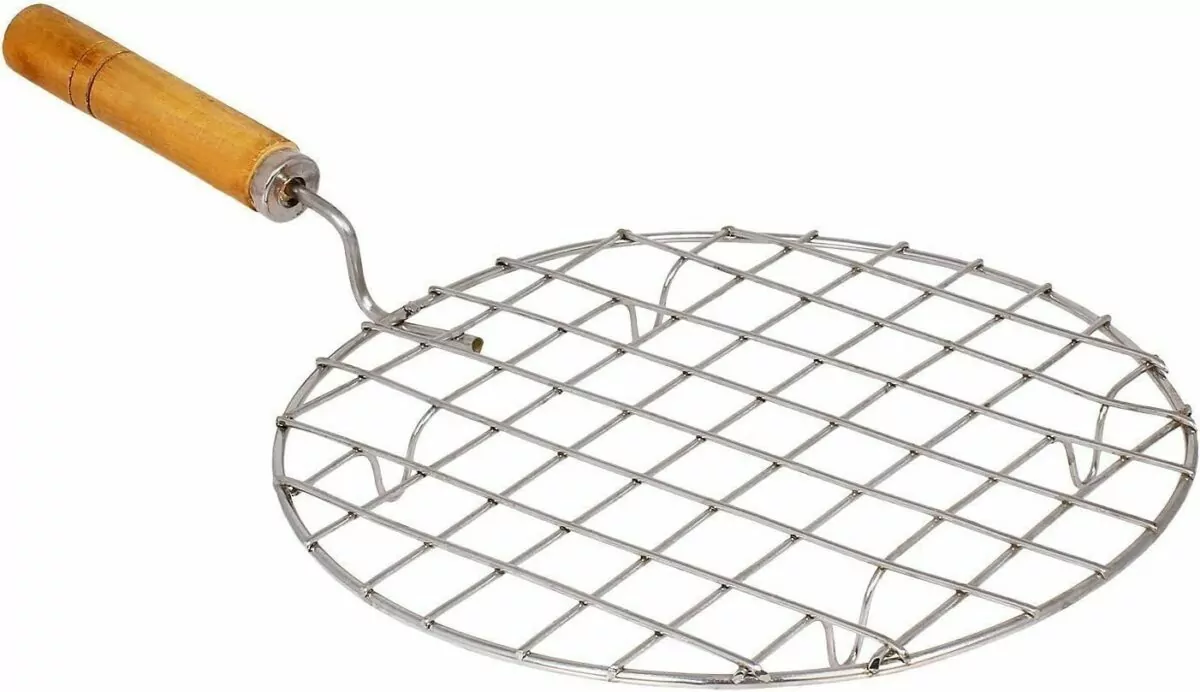
Jari (For papad or chapati)
Designed to sit on top of a gas hob so you can roast items directly on the flame, this wire mesh, known as a papad jari (or jali) is extremely useful. Use it for puffing chapati, roasting papad, charring vegetables for vangyache bharit (baingan bharta), and much more. It’s fuss-free and mess-free.
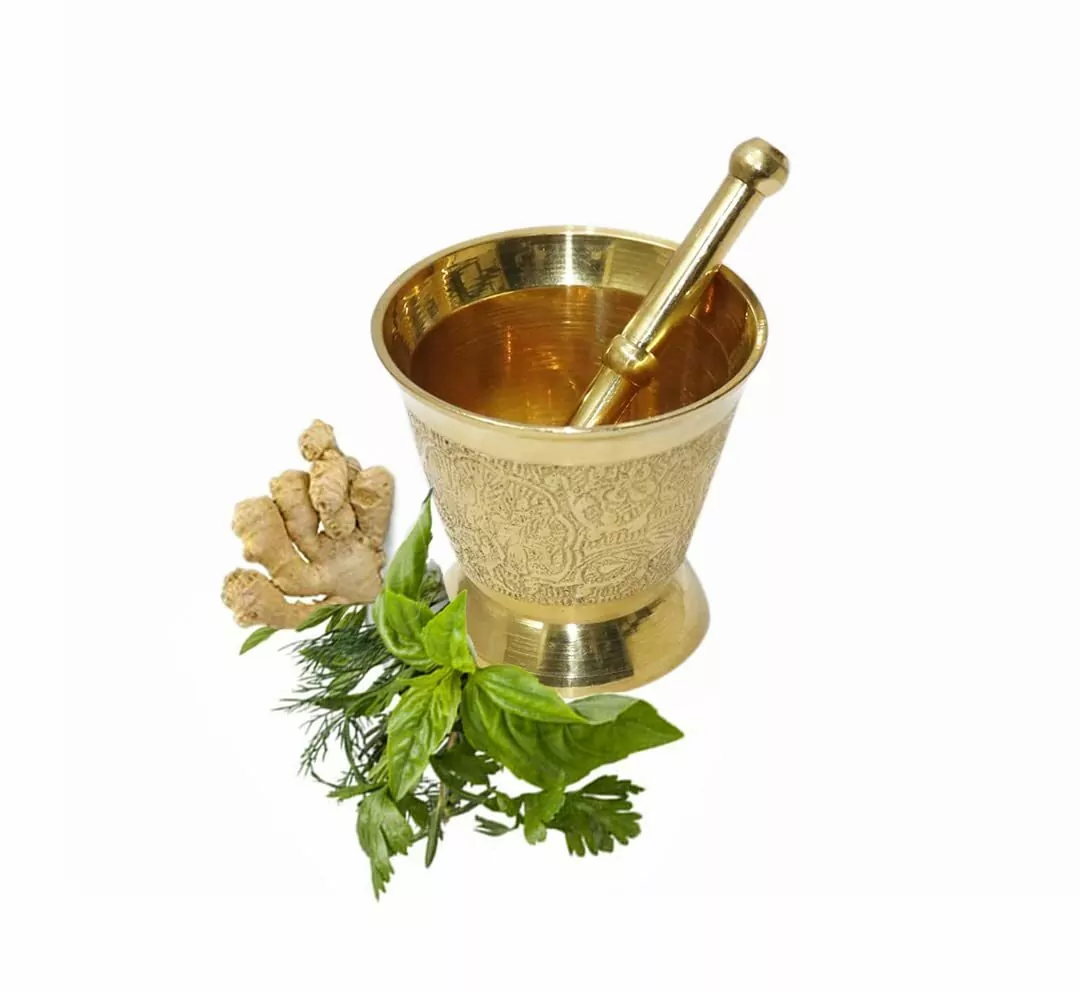
Hamam Dasta/Khal Batta (Mortar and Pestle)
Mortar and pestle are used across almost every culture, and India is no exception. The traditional tool is usually made with brass, but wood, marble, and stone are also available on the market. Most often used for hand-grinding whole spices to make custom spice blends, a mortar and pestle is essential for all manner of culinary preparations, including pesto or Thai curry paste.
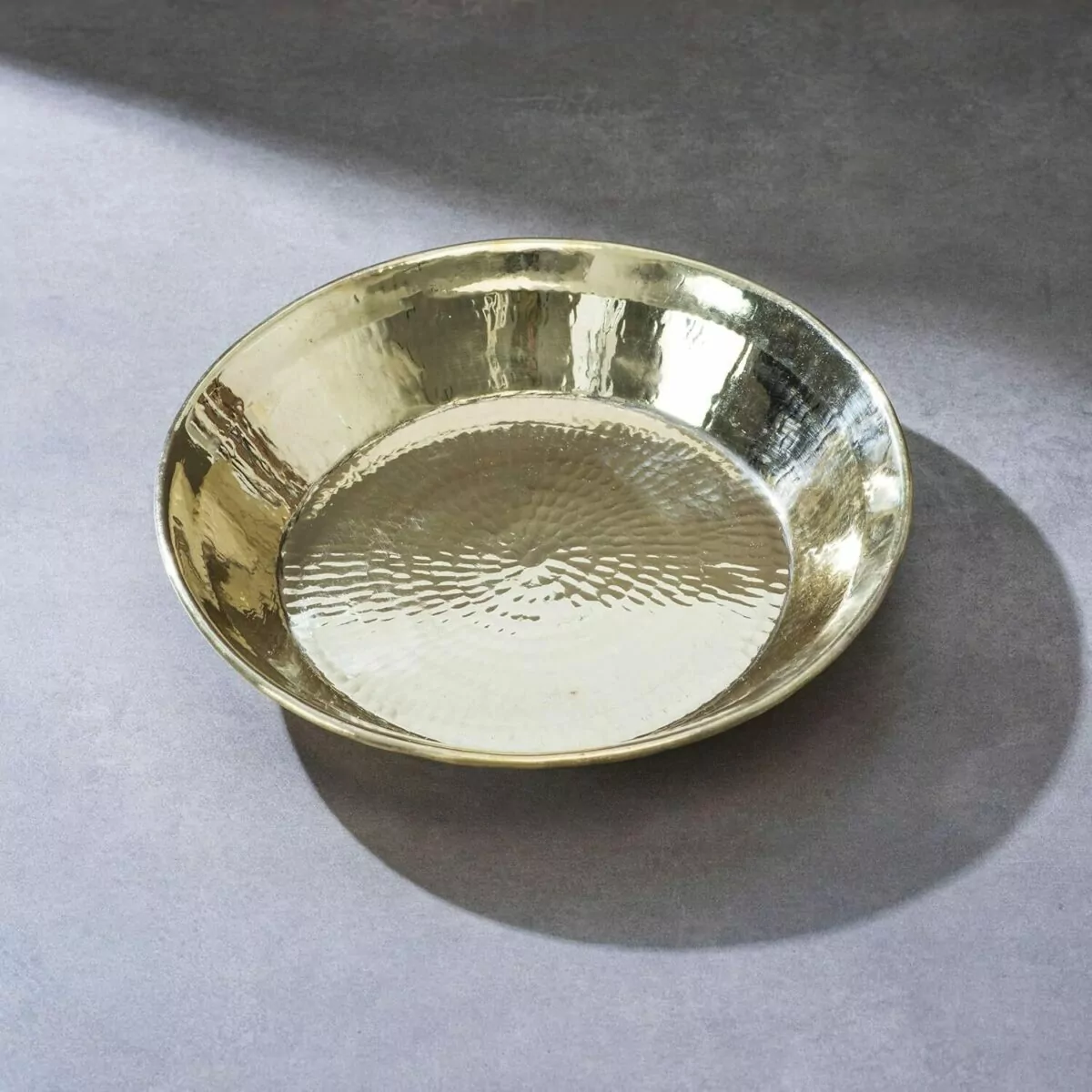
Parat (Mixing bowl)
This wide, flat-bottomed mixing bowl is a vital piece of Indian cookware. If you regularly make Indian bread, it’s invaluable — the flat surface mimics a countertop, making kneading easy work and mess-free. You can also arrange your dough balls in a circle and add flour to the middle, eliminating the need for multiple bowls. Opt for affordable aluminium or fancier brass.
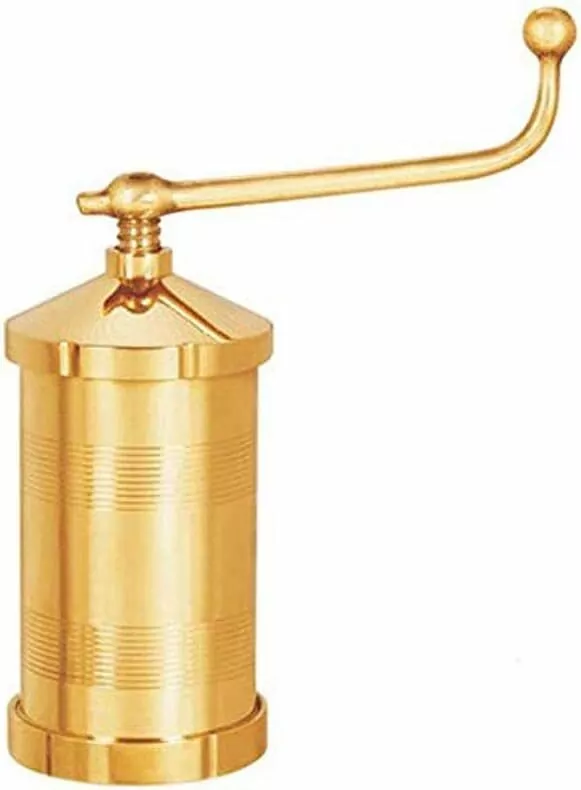
Sev sancha (Multi-Purpose Press)
One of the most versatile tools in an Indian kitchen, a sev sancha has insertable discs to produce different patterns in dough. A manual press works by rotating the handle, which presses the dough through the discs. Many Indian snacks are made this way, including sev, chakli, ghatiya, murukku, kurdai, idliyappam, and more.
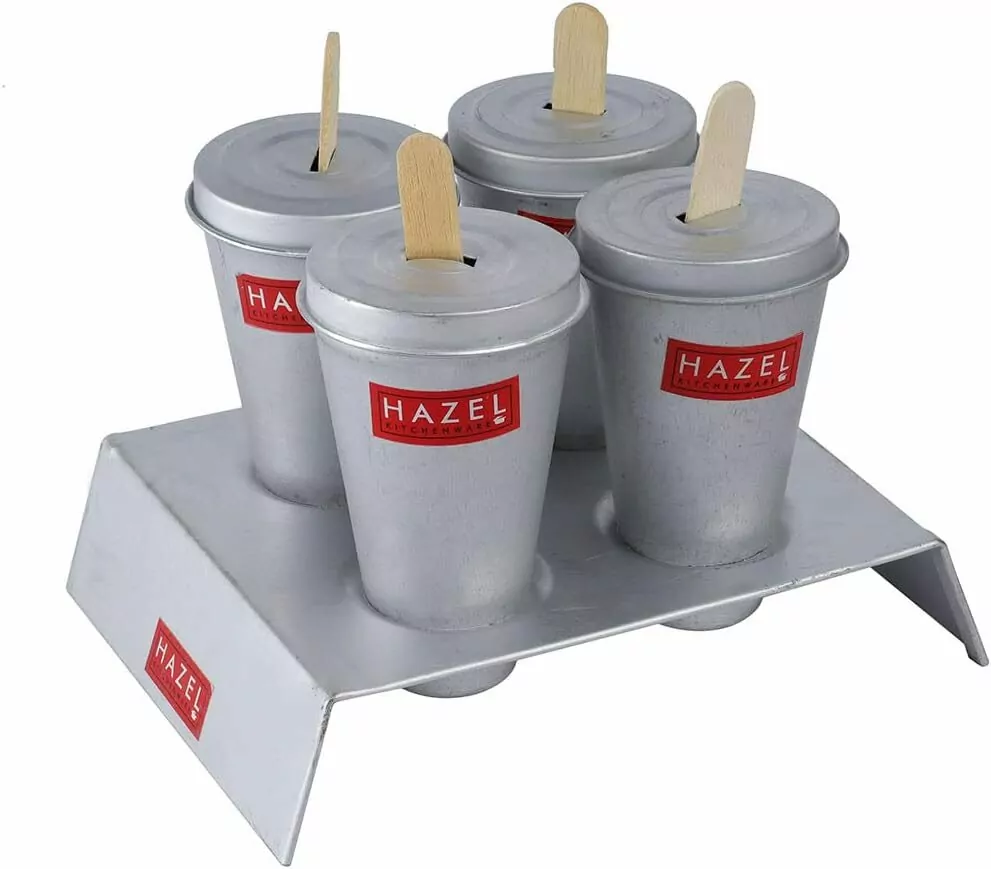
Kulfi Mould
Kulfi — Indian ice lollies — are a great snack during hot summers. Traditionally, kulfi is made in small, stainless steel, rounded, and taper moulds. While you can technically use any ordinary ice lolly mould for kulfi, the Indian moulds give an authentic, traditional touch.
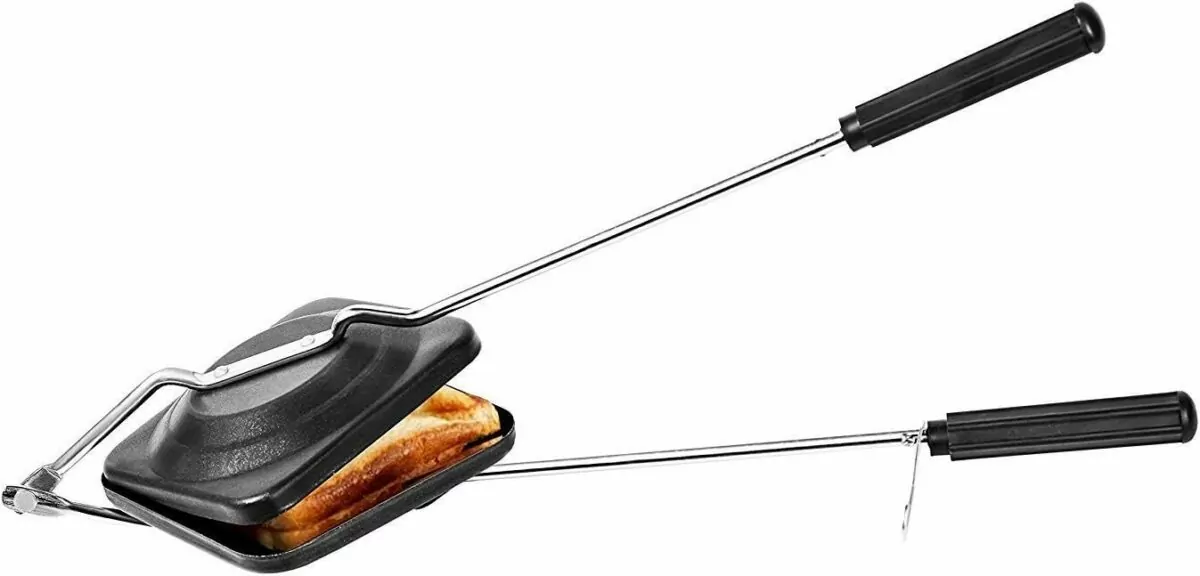
Sandwich Grill
Have you heard of the famous street food, Bombay toast? Grilled veg sandwiches? On the streets of India, there are countless variations of grilled sandwiches, and these handheld grills, heated directly over the open flame, are the most authentic tool to recreate that street food taste at home.
🏺 Traditional Indian Storage Items
While not technically cookware, I’ve included this list of storage items as they perfectly complement and complete an Indian cookware collection. Kitchen storage can be a tricky business at the best of times, but Indian people have invented fantastic solutions for everything from spices to 10kg packs of rice!
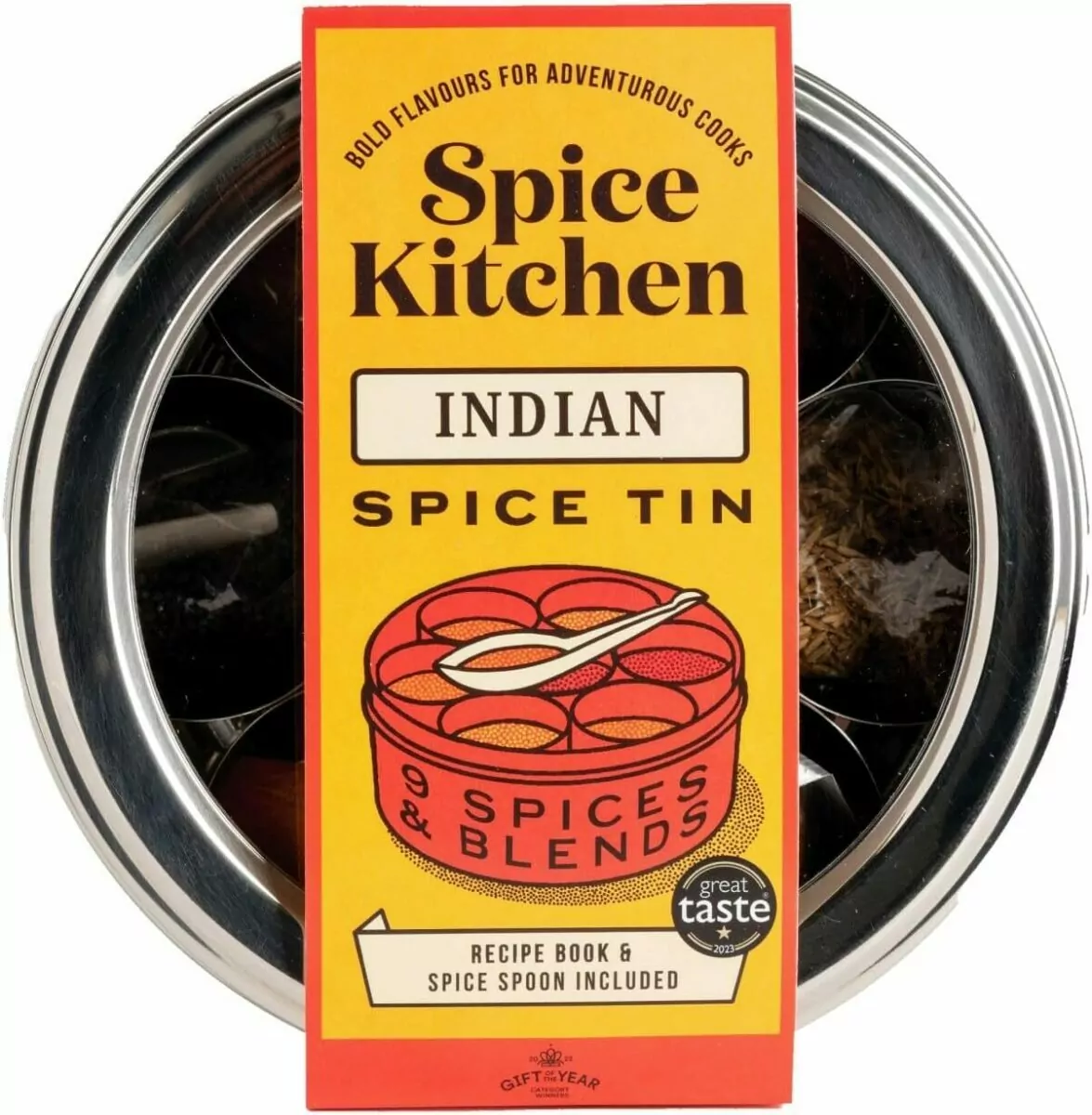
Masala dabba
Undoubtedly, the most frequently used item in an Indian kitchen, a masala dabba translates to “spice box.” It’s a beautiful and practical way to store your most-used spices; seven small metal tins inside help keep the spices separated, all arranged inside a large tin with a lid. Most sets also come with a small metal spoon.
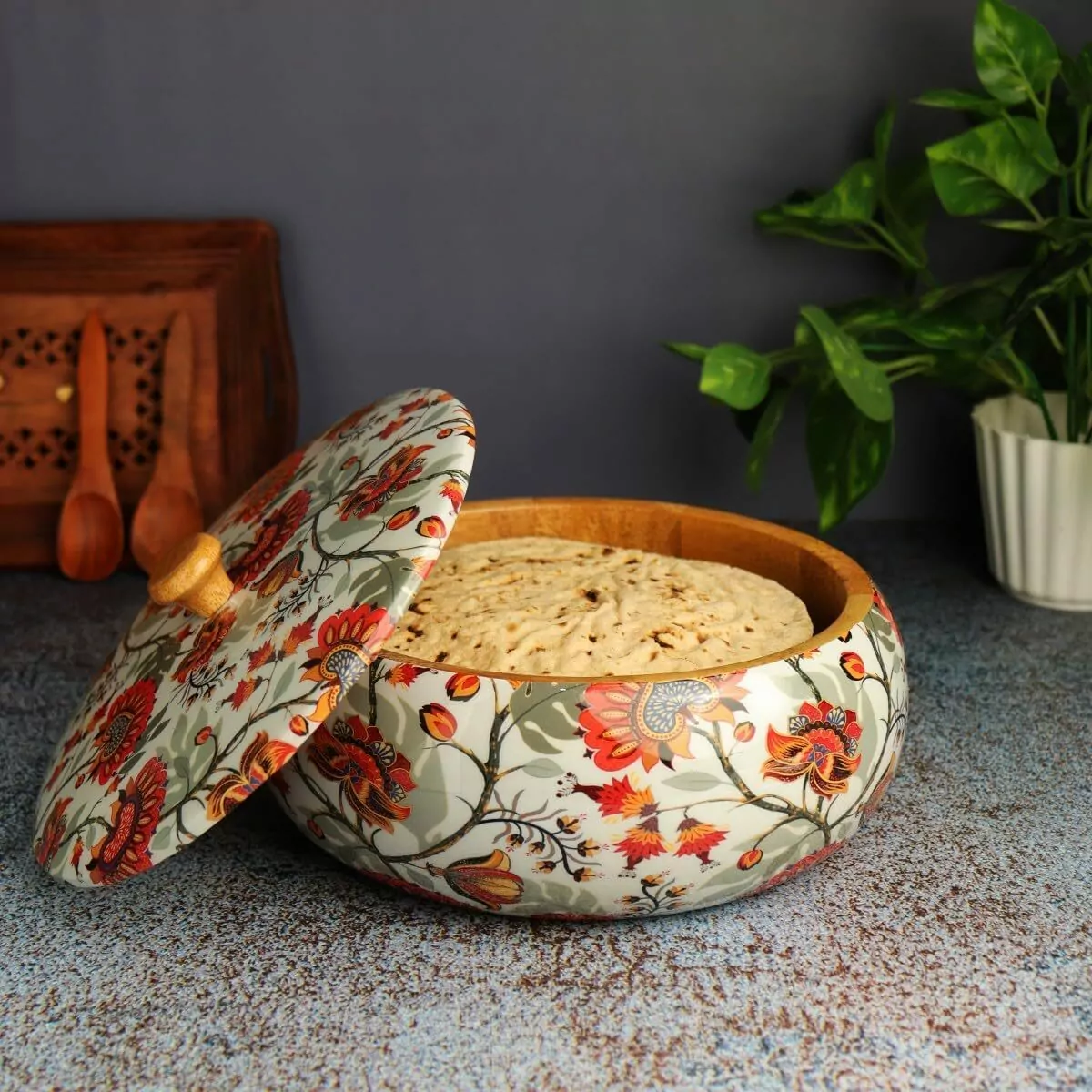
Roti dabba
These beautiful insulated pots are designed to keep your chapati/roti warm before serving. It’s an excellent addition to your Indian cookware set for beginner chapati cooks! You don’t have to worry as much about how long it takes to roll chapatis — any you’ve already made can be placed inside the roti dabba, where they stay warm. Designs vary from plain metal to elaborate patterns and even cloth bags.
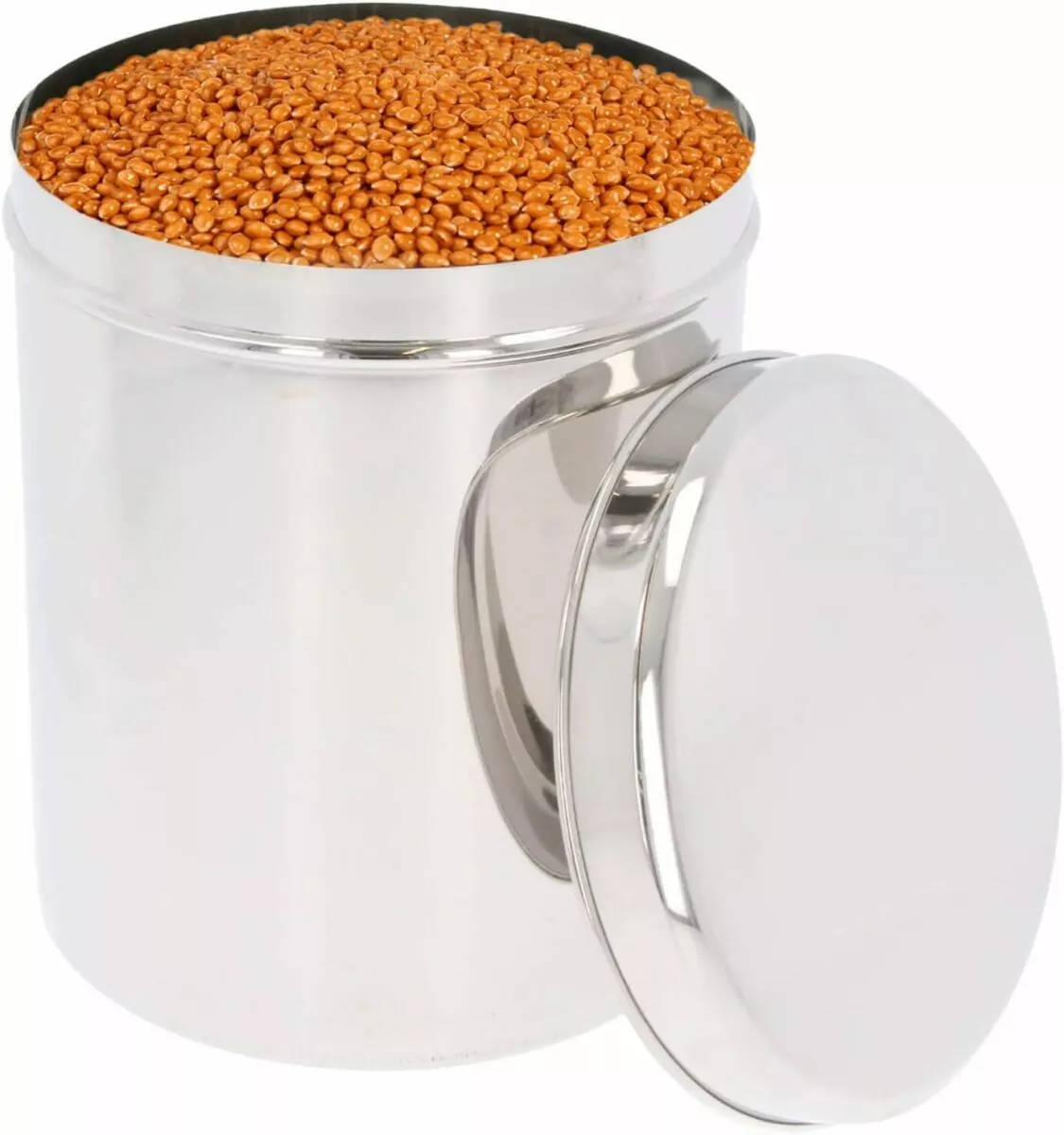
Storage dabba/METAL CANISTER
If you cook Indian food regularly, you’ll find yourself developing a large collection of rice, chapati flour, pulses, and other grains. In India, these large metal canisters are used to store bulk-bought items and handmade snacks.
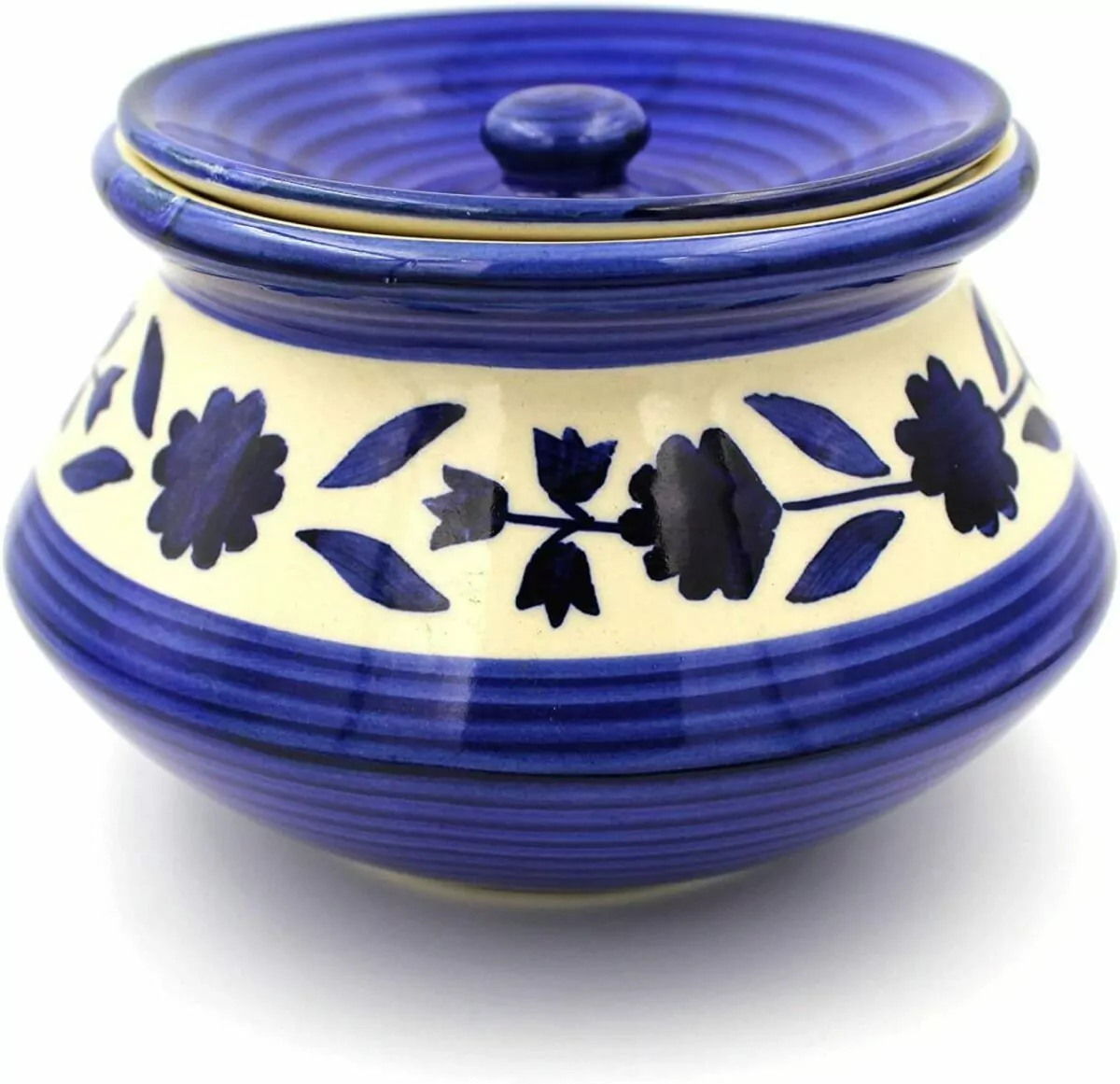
Dahi handi
Used for making and storing yoghurt, a dahi handi is a beautiful and practical addition to your Indian cookware collection. Yoghurt is a staple ingredient in Indian cuisine, used in dishes from Punjabi dum aloo to raita, drinks, desserts, and curd rice. Instead of buying yoghurt, most people make it themselves, which is where the dahi handi comes in handy (get it!).
🛒 Where Can You Buy Indian Cookware in the UK?
Although you can’t find an exhaustive range of Indian cookware brands in the UK, there’s still a surprising amount of choice.
If you live in or near a large metropolitan city, head to your local Indian store. Many have a small yet useful selection of cookware, including most basics like chapati tawa, kadai, clay handi, and utensils. For more specific items, your best bet is a cookware store in London, such as Popat Stores.
For those of us living in areas where Indian stores are few and far between, it’s best to source your Indian cookware online. Amazon has an impressive collection of Indian cookware brands — all the linked products above are available on Amazon. Rather shop independently? No problem. The Asian Cookshop, Popat Stores, Karahi Shop, India Bazaar, and Lakshmi Stores each offer UK-wide shipping.
